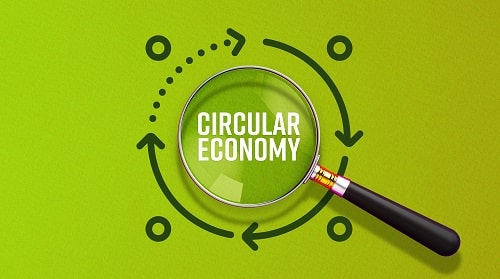As the Health and Safety at Work Act 1974 turns 50 on 31 July, the world of work, both now and in the future, looks markedly different to when this ground-breaking piece of legislation was enacted. Yet, the Act has stood the test of time and its principles remain as relevant now as they did in the summer of ’74 – unlike some of the haircuts from that time.
Features
A golden era of safety: 50 years of the Health and Safety at Work Act
In this issue of Safety Management, we celebrate half a century of the Health and Safety at Work Act 1974 by speaking to key people working in health and safety – from membership organisation heads to practitioners to union activists – about what it has achieved. We also look ahead to the challenges and opportunities facing the workplace in the next 50 years, and how we can build on the Act’s legacy to ensure that the health, safety and wellbeing of workers continues to improve.
 The Health and Safety at Work Act 1974 turns 50 on 31 July. Photograph: iStock/GMVozd
The Health and Safety at Work Act 1974 turns 50 on 31 July. Photograph: iStock/GMVozd
Risk-based approach
The Health and Safety at Work Act 1974 was born out of a report published two years earlier by Lord Alfred Robens, which called for a less prescriptive and more risk-based approach to occupational safety and health, where the onus was mainly on the employer to manage the risks associated with the work they were asking people to carry out. The years leading up to the publication of Robens’ report were characterised by several fatal and headline-grabbing workplace tragedies, including the 1966 Aberfan mining disaster which killed 116 children and 28 adults. Public sentiment at the time was that something needed to be done.
The Act can be credited with helping to reduce the number of annual workplace fatalities in the UK from 651 in 1974 to 135 in 2023. The number of non-fatal workplace injuries has also fallen by more than 80 per cent since the Act came about. But there is much still to do.
Our contributors raise concerns about funding cuts to the Health and Safety Executive (HSE) – a view shared by British Safety Council chief executive Mike Robinson, who wrote in the June issue of Safety Management that, “with fewer staff, stretched resources and a growing workload, we risk rowing back on the good work that’s been done since 1974”.
In its Health, Safety and Wellbeing Manifesto, which was released ahead of the 4 July UK general election, British Safety Council set out a series of steps that the country’s next Government could take to make the next 50 years even safer than the last.
Here is a round-up of our contributors’ thoughts on the Act as it reaches its golden anniversary, along with their hopes for the future:
Kelly Nicoll, president-elect, IOSH
The Health and Safety at Work Act has been one of the most pivotal pieces of legislation in the world of health and safety. From its heart-breaking links to the worst mining tragedy in the UK, it has become the cornerstone of the way we manage risk, recognising that those who create the risk are the best to manage it.
 Kelly Nicoll, president-elect, IOSH: "I hope that artificial intelligence (AI) helps us proactively manage health and safety risks, and that we are working with and alongside it." Photograph: IOSH
Kelly Nicoll, president-elect, IOSH: "I hope that artificial intelligence (AI) helps us proactively manage health and safety risks, and that we are working with and alongside it." Photograph: IOSH
Fatalities have reduced significantly, although there is an argument that in the UK we aren’t working in the same high-risk industries as we were over 50 years ago. But the fundamental principles of the Act have surely profoundly assisted in that reduction.
The fact that it is still here, 50 years later, as the foundation of risk management demonstrates the impact and its continuing relevance. It’s not only here in the UK, but elsewhere in the world where you can see its influence and impact, having been used as the inspiration for countless underpinning pieces of occupational safety and health legislation across the world.
Prevention is better than cure
For a long time, we have all focused on the “safety” aspect of the Health and Safety at Work Act. Frustratingly though, the number of fatal incidents has plateaued, and while we work to continue to bring this number down, significant life-changing injuries and focus on the “health” aspect are where our continuing attention and efforts should be.
Our Government needs to recognise that prevention of ill health and significant accidents at work can assist in reducing the pressures in our NHS, and that occupational safety and health professionals and practitioners can assist.
Recently, there’s been a focus on psychosocial risks and managing mental health and wellbeing in the workplace. But this has come without the support of mental health services that are timely and effective. Proactive initiatives that focus on prevention in all areas of health and safety can help reduce the number of people out of work, create a more motivated workforce, and improve productivity and the economy.
Artificial intelligence
I hope that artificial intelligence (AI) helps us proactively manage health and safety risks, and that we are working with and alongside it. It can assist with completing the higher-risk activities that people have to do, and help us move towards the ultimate goal of a safe and healthy world of work.
I’d like to think that deaths from asbestosis are significantly reduced, and that we are proactively managing occupational health in such a way that we are helping our people to stay healthy, detecting illness and diseases earlier, and reducing the burden on families, our NHS and healthcare across the world. AI could play a major role in all of this.
Dee Arp, chief operating officer, NEBOSH
The fact that the Health and Safety at Work Act is still with us and relevant 50 years later is a credit to what an outstanding piece of legislation it is. It came in as an enabling, self-regulating Act and placed a duty on employers to ensure the health and safety of their employees and others who may be affected by their work activities. This remains as relevant as it was 50 years ago, from small organisations up to the huge corporates.
 Dee Arp, chief operating officer, NEBOSH: "The penny is dropping that we need to look after the people, and I think the pandemic really enhanced that." Photograph: NEBOSH
Dee Arp, chief operating officer, NEBOSH: "The penny is dropping that we need to look after the people, and I think the pandemic really enhanced that." Photograph: NEBOSH
Great progress has been made, and this is reflected in the accident and incident statistics, but there is still work to do.
Funding concerns
Reduction in funding [for HSE] is always a concern. The research, guidance and advice produced by HSE is invaluable – giving all organisations direction and clarity – and it’s a real concern that the cuts could impact this important resource.
That’s what makes the wheels go round – it’s the Health and Safety at Work Act and all the additional regulations, but it’s the guidance and information HSE gives that makes it easier for organisations to meet the legal requirements and continue to make workplaces safer and healthier.
Looking after the people
The penny is dropping that we need to look after the people, and I think the pandemic really enhanced that. Mental health became easier to talk about, but there’s still so much more to do. What I hear from a lot of organisations is, “we know the figures are staggering and completely unacceptable but give us something tangible to do about it”.
This includes improving understanding that when a person comes to work, they bring their whole self. The Health and Safety at Work Act covers that; when you look at what is needed to reduce people’s stress and enhance their wellbeing, it’s about giving them the things they need for the job we are asking them to do.
It would be the ask of any Government that they recognise the importance of people in organisations and understand the benefits of looking after them – and the criticality of legislation and the HSE to do that.
The golden thread to all of this is the people – working together so people are healthy, happy and empowered, so they feel safe and confident enough to speak up when things are not right. This contributes to organisational high resilience, performance and sustainability, and is simply the right thing to do.
Tim Roberts, director, The Event Safety Shop (TESS)
The Health and Safety at Work Act hasn’t changed, and I don’t think it needs to – even though work practices have changed dramatically since 1974. It’s just an immensely well-written piece of legislation; it’s non-prescriptive but it sets very clear requirements on employers and others.
 Tim Roberts, director, The Event Safety Shop (TESS): "It sounds perverse for a practitioner to say, but I really applaud the way the Health and Safety at Work Act sets out punishments for transgressions, and how the sentencing guidelines over time have kept up with that." Photograph: The Event Safety Shop
Tim Roberts, director, The Event Safety Shop (TESS): "It sounds perverse for a practitioner to say, but I really applaud the way the Health and Safety at Work Act sets out punishments for transgressions, and how the sentencing guidelines over time have kept up with that." Photograph: The Event Safety Shop
It sounds perverse for a practitioner to say, but I really applaud the way the Health and Safety at Work Act sets out punishments for transgressions, and how the sentencing guidelines over time have kept up with that. This means there is a really big, heavy and robust stick that focuses the mind in the boardroom, because they recognise that transgressions can result in very serious fiscal penalties and incarceration.
Across the pond
If you look, for example, at the USA, the equivalent body to the Health and Safety Executive is OSHA [Occupational Safety and Health Administration] and OSHA doesn’t really have the ability to levy significant fines that get the attention of the boardroom. Most of the court action on the other side of the pond revolves around litigation and civil claims.
Both the flexibility in the way the Act is written and the force of the law that’s behind it in the UK, I find very useful.
We do a lot of work around the world now and seeing the frustration sometimes when you’re in other countries, you think back to how the Health and Safety at Work Act works in this country and it’s genius.
There are so many pieces of legislation in other countries that are so prescriptive that you literally can’t have a discussion with somebody about the way you’re working because they say, “no, it says here that it must be done like this”.
The Health and Safety at Work Act doesn’t tell us how to do it, it tells us what the end goal is: you’ve got to keep people safe. How we do it is up to us as employers, to ensure that it’s being done properly and safely, and I think that’s hugely important. When you see safety practitioners in other countries, sometimes you think they’re really struggling to get their point across, whereas we can do it within our legal framework.
Janet Newsham, chair, Hazards Campaign
I asked one or two older people I know who worked in the trade union movement before the Health and Safety at Work Act and one of them stuck in my mind. He said that when it came in, the employer was worried because they were going to be held to account with the law, so they felt that they had to get things right.
 Janet Newsham, chair, Hazards Campaign: "People saw the Act as ground-breaking – they looked at it as something that was going to be very significant in terms of keeping people safe and healthy at work. But I think there has been a gradual undermining of it." Photograph: Hazards Campaign
Janet Newsham, chair, Hazards Campaign: "People saw the Act as ground-breaking – they looked at it as something that was going to be very significant in terms of keeping people safe and healthy at work. But I think there has been a gradual undermining of it." Photograph: Hazards Campaign
He said it was good at the beginning but after a number of years, the regulator wasn’t holding them to account enough. I think that’s probably more so in later years than in the beginning.
Research shows that [HSE] funding has been cut by over 50 per cent and there are not enough officers to do the job. [HSE] has taken on a more commercial, less independent role – they’ve been sidelined as a regulator.
Gradual erosion
We campaign in the trade union movement to make sure tripartism works within the HSE. At the beginning, tripartism was at the centre of it, but that’s been undermined over the years. At the moment, there are two trade union representatives on there when there had been three in the past. This undermines the whole tripartism movement.
People saw the Act as ground-breaking – they looked at it as something that was going to be very significant in terms of keeping people safe and healthy at work. But I think there has been a gradual undermining of it.
Political ping-pong
As different governments have come in, there have been some really negative views about health and safety. They’ve said that health and safety is a burden to business. We would say that if you’ve got a good business and you’ve got good health and safety, then you’re more productive and people are safer. But it’s been used as political ping-pong, with [politicians] saying “we’re going to cut the red tape”.
In our organisation, we say we need red tape – it’s better than bloody bandages. That’s the consequence of not having proper regulation; people get killed or injured at work.
We need proper investment, and we need change in the way that we view regulation. It’s not a burden on business. If you’ve got regulation right, it’s about encouraging employers to do things right. If you’re doing it right, then that’s a benefit to business and it’s a benefit to workers.
FEATURES

How to build circular economy business models
By Chloe Miller, CC Consulting on 07 April 2025
Widespread adoption of a circular economy model by business would ensure greater environmental and economic value is extracted and retained from raw materials and products, while simultaneously reducing carbon emissions, protecting the environment and boosting business efficiency and reputation.

What does the first year on an accelerated net zero path have in store for UK businesses?
By Team Energy on 07 April 2025
The UK is halfway to net zero by 2050 and on a new, sped-up net zero pathway. In light of this, Graham Paul, sales, marketing & client services director at TEAM Energy, speaks to TEAM Energy’s efficiency and carbon reduction experts about the future of energy efficiency and net zero in the UK.

Aligning organisational culture with sustainability: a win, win for the environment and business
By Dr Keith Whitehead, British Safety Council on 04 April 2025
The culture of an organisation is crucial in determining how successfully it implements, integrates and achieves its sustainability and environmental goals and practices. However, there are a number of simple ways of ensuring a positive organisational culture where everyone is fully committed to achieving excellent sustainability performance.



